We’re Loving This New Take on Flagstone
“The main idea of the project was to create a fascinating design of the space that values both light and shadow,” explains Maxim Kashin, who founded his own architecture firm in 2013, about a recently completed renovation of a townhouse in Moscow. But, he says, it still had to be functional for a young family with two children—not an easy feat in the living and dining area’s compact, L-shaped footprint.
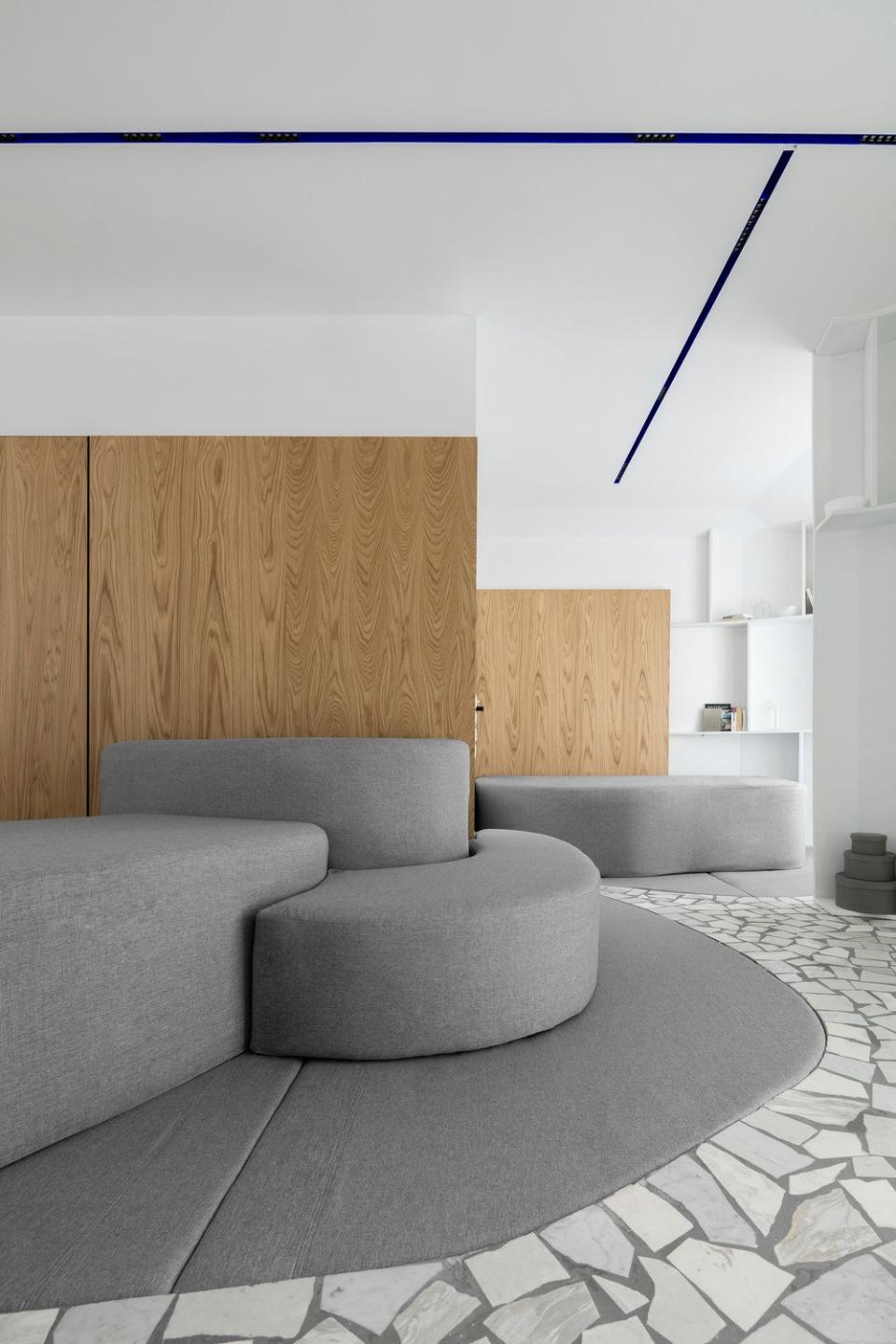
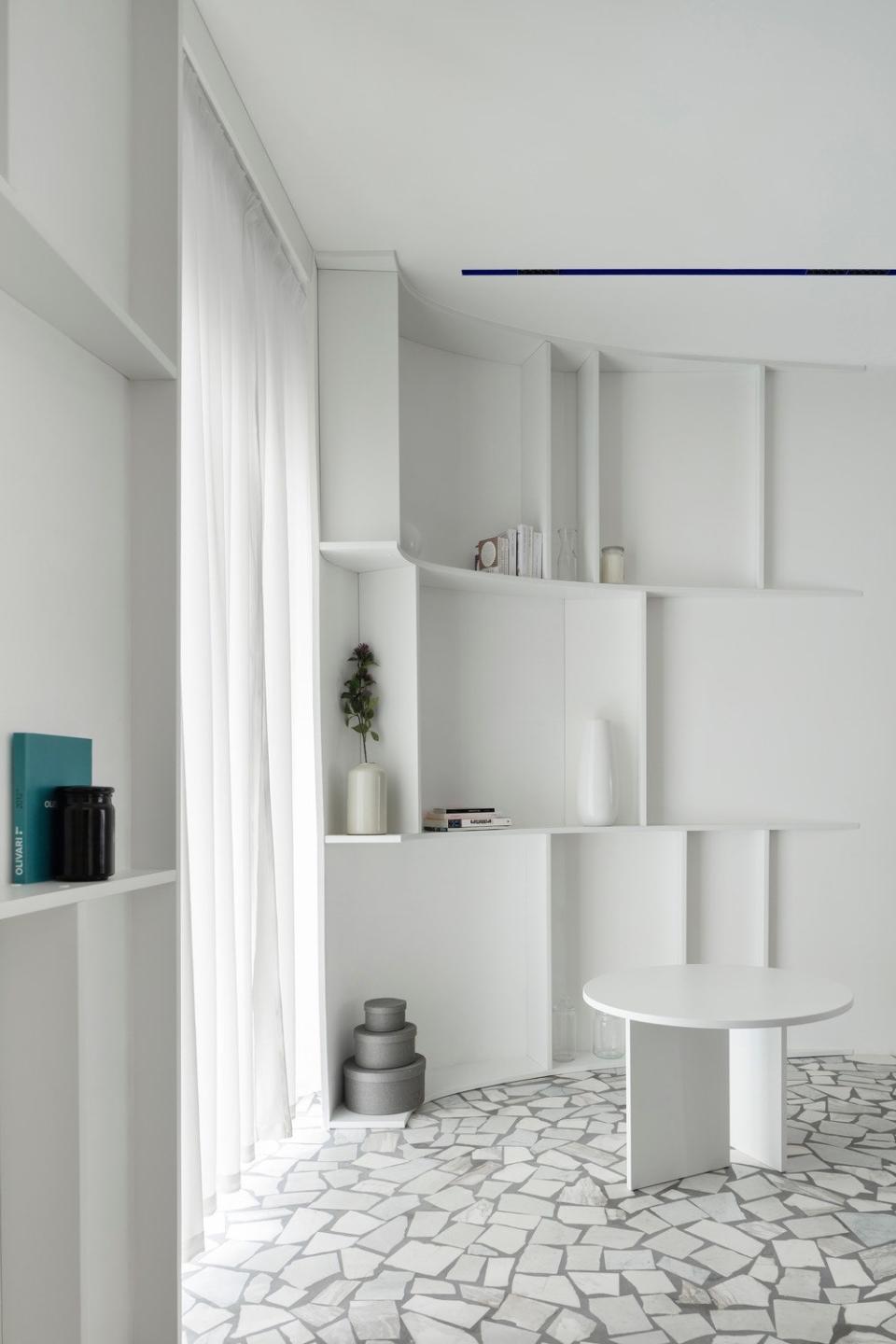
Maxim was initially inspired by the futuristic, all-white designs of Spanish architect Santiago Calatrava, so he used sculptural, asymmetrical shapes, such as two curved, multilevel couches in the living area and an artistically angled kitchen island to break down and counteract the space’s original rectilinear layout.
The curved walls in the space serve as dividers between areas and also act as open shelving, “creating interesting visual accents of light and shadow,” says Maxim. But our favorite, standout, obsessed-with-it element? That’s without a doubt the striking, oversized take on traditional terrazzo that he used on the floors and kitchen backsplash.
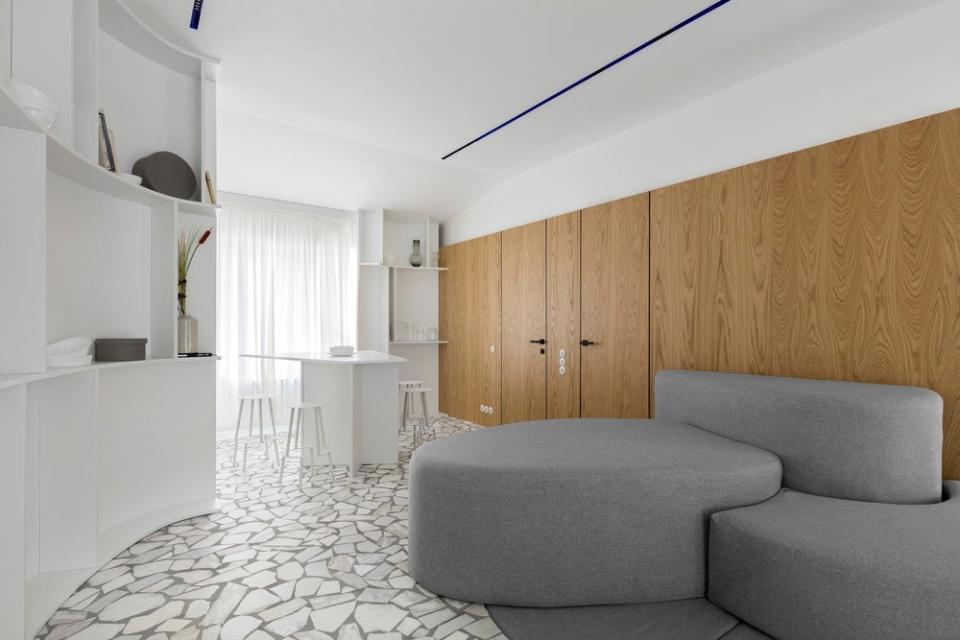
The floors and backsplash are made using what Maxim describes as a “breccia technique out of marble pieces”—a material that’s got the visual appeal of traditional, on-trend terrazzo, the durability of naturally occurring breccia (a type of rock where broken pieces are cemented together), and the handicraft of hand-laid flagstone paving.
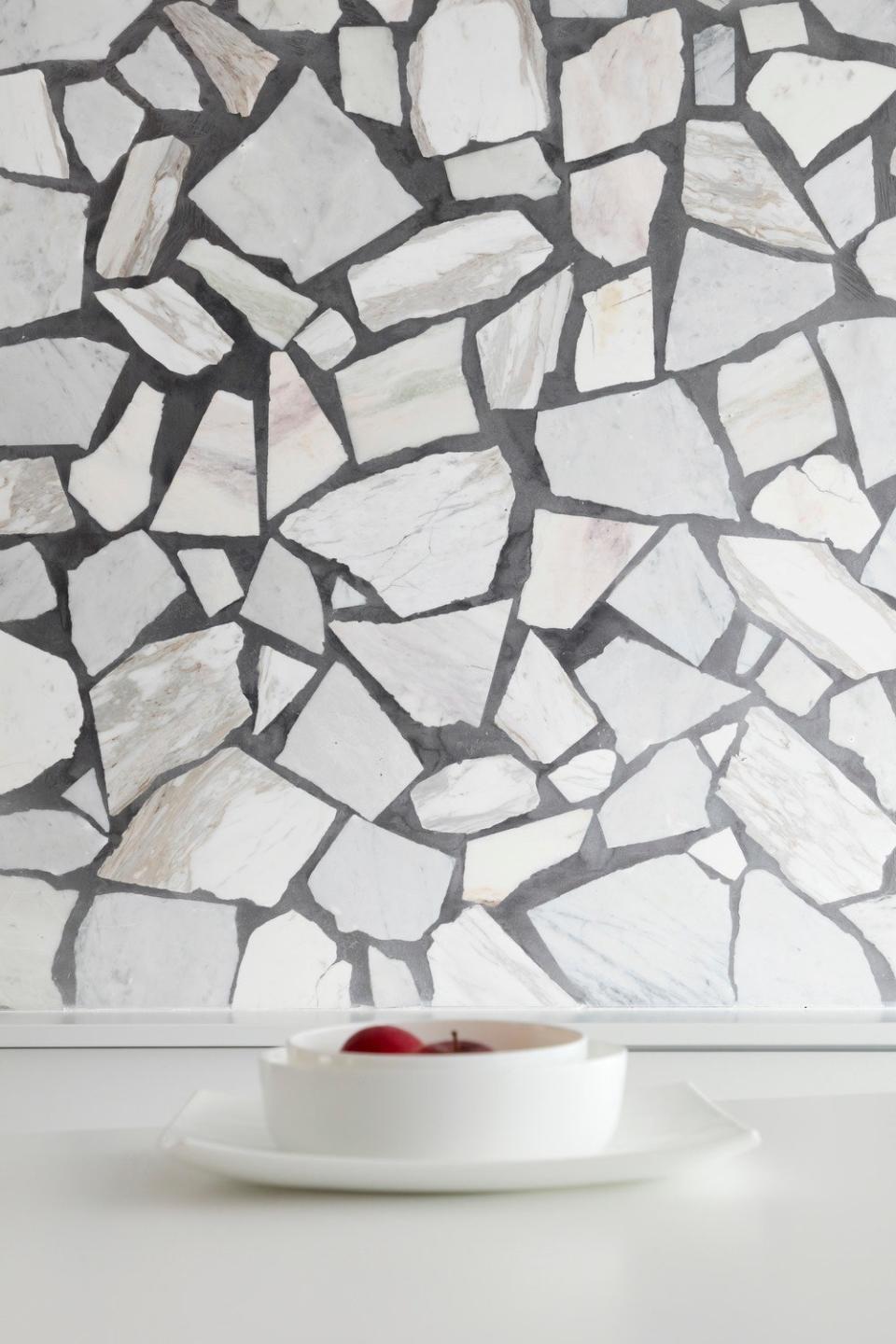
While terrazzo typically uses small chips of marble, quartz, or other stone held together with a binder, Maxim instead decided to go big and bold: He used larger, more graphic pieces of a light-colored marble with hints of red and gray veining inlaid in a sea of gray grout or aggregate to achieve an even, smooth surface. The abstract pattern it creates resembles landscapes but with a futuristic twist, explains Maxim, and it becomes the visual star in the otherwise minimalist, neutral-toned room.
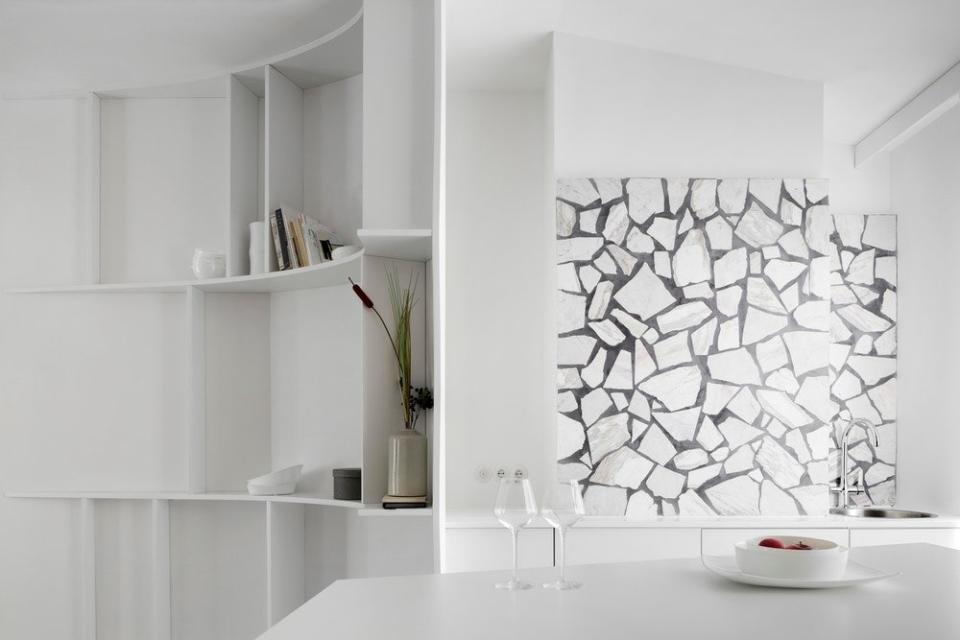
But the impactful design decision didn’t come easy. Maxim says that the floor was by far the most challenging part of the project, but he notes that it’s both sustainable in its reuse of existing materials and very durable—an important feature for a heavily used space for a busy family.

To create the floor and the backsplash, each piece of marble had to be individually laid out so that it was an appropriate distance from adjacent pieces while still considering the layout and the undulating curves of the sofas, which are typically surrounded by a softer, cloth-covered area.
So what is it about the terrazzo treatment that strikes us? First of all, we love how visually arresting the breccia technique is: The contrast between the lighter stone and the gray grout draws your eye to the material, but it still connects to the rest of the space because of the room’s white and gray furnishings.
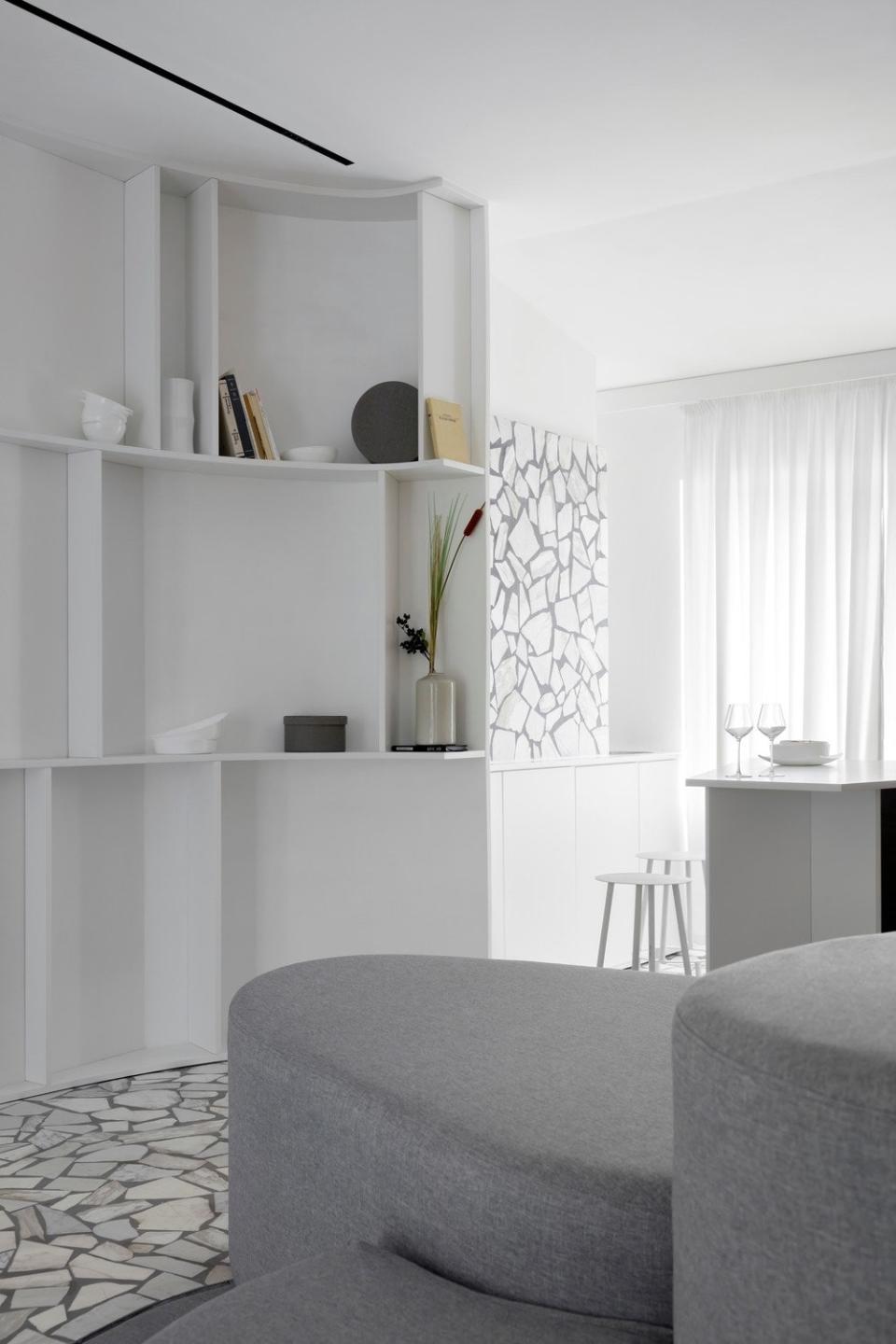
We’re also into the versatility of the material: It works as both a floor and a backsplash from a functional and design point of view, and we could see it in a whole host of settings, like an outdoor patio or a bathroom. And, of course, we appreciate its eco-friendly intent to reuse an existing element, combining beauty and recycled material.
Originally Appeared on Architectural Digest

